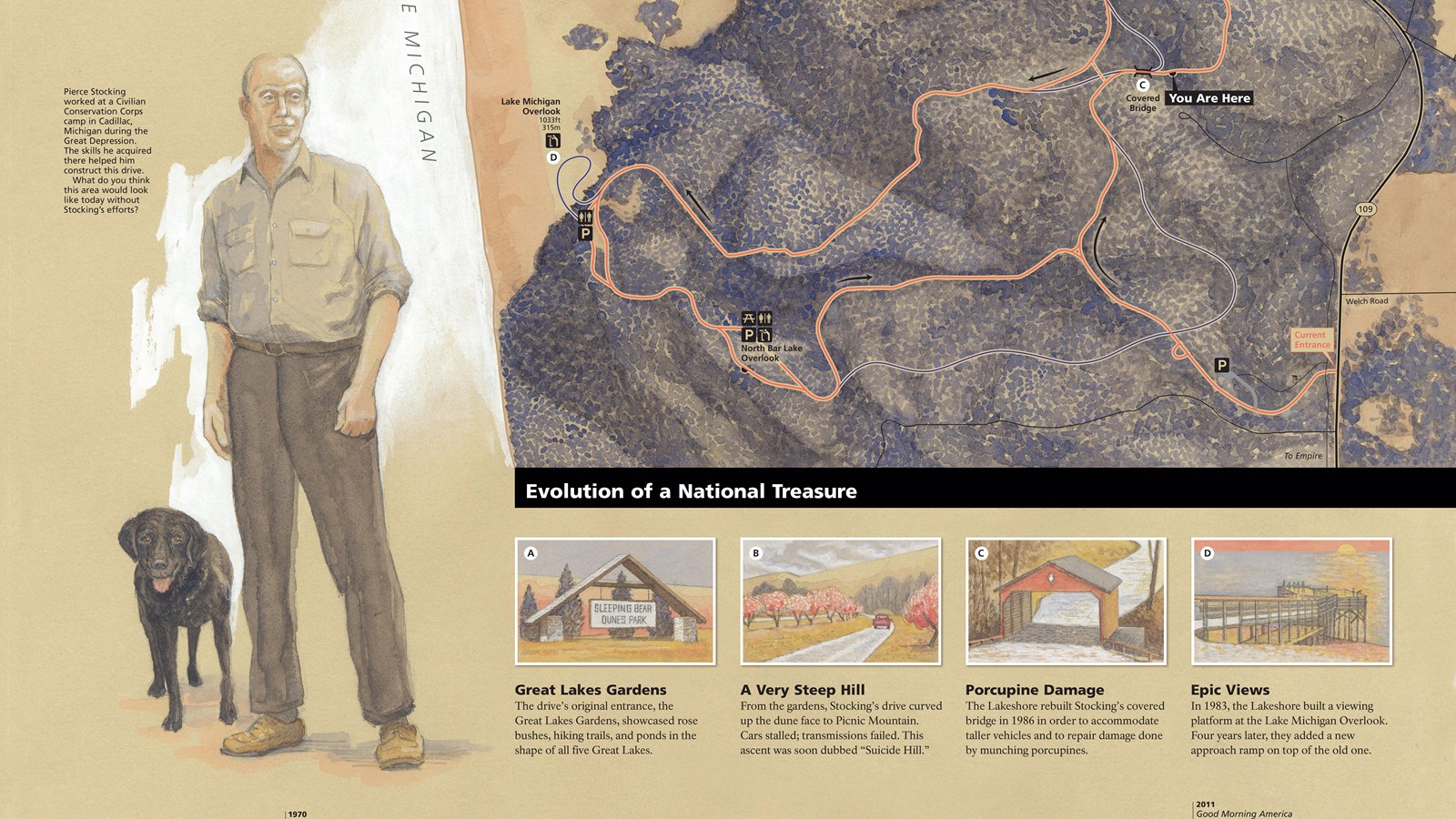Last updated: September 19, 2025
Place
Wayside: A Perfect Place

NPS credit
Historical/Interpretive Information/Exhibits
Pierce Stocking (1908-1976) wanted to preserve this area's natural beauty. In the early 1960s, the local lumberman began envisioning "a haven of rest" called Sleeping Bear Dunes Park. It opened to the public in 1967. For just $2.75 per vehicle, visitors could drive a fourteen-mile scenic roadway, relax at picnic areas, and delight in spectacular views of Lake Michigan, Glen Lake, and the sand dunes.
When Sleeping Bear Dunes National Lakeshore purchased Stocking's park in 1976, they renamed it Philip Hart Nature Trail after the U.S. Senator from Michigan who fought to establish the Lakeshore six years earlier. Staff considered removing the scenic drive to protect the fragile dunes.
Ultimately, they realized what Stocking had: if you want people to love this earth enough to conserve it, they also have to be able to enjoy it. So the drive remained, and the Lakeshore renamed it in honor of Stocking and his resolve to preserve this place for future generations.
Evolution of a National Treasure
Great Lakes Gardens
The drive's original entrance, the Great Lakes Gardens, showcased rose bushes, hiking trails, and ponds in the shape of all five Great Lakes.
A Very Steep Hill
From the gardens, Stocking's drive curved up the dune face to Picnic Mountain. Cars stalled; transmissions failed. This ascent was soon dubbed "Suicide Hill."
Porcupine Damage
The Lakeshore rebuilt Stocking's covered bridge in 1986 in order to accommodate taller vehicles and to repair damage done by porcupines' munching.
Road Revisions
To prevent erosion of the dunes, the Lakeshore moved the drive's entrance; closed segments (orange); and rerouted the drive into a one-way loop (blue).
Captions :
Pierce Stocking worked at a Civilian Conservation Corps camp in Cadillac, Michigan during the Great Depression. The skills he acquired there helped him construct this drive. What do you think this area would look like today without Stocking's efforts?
